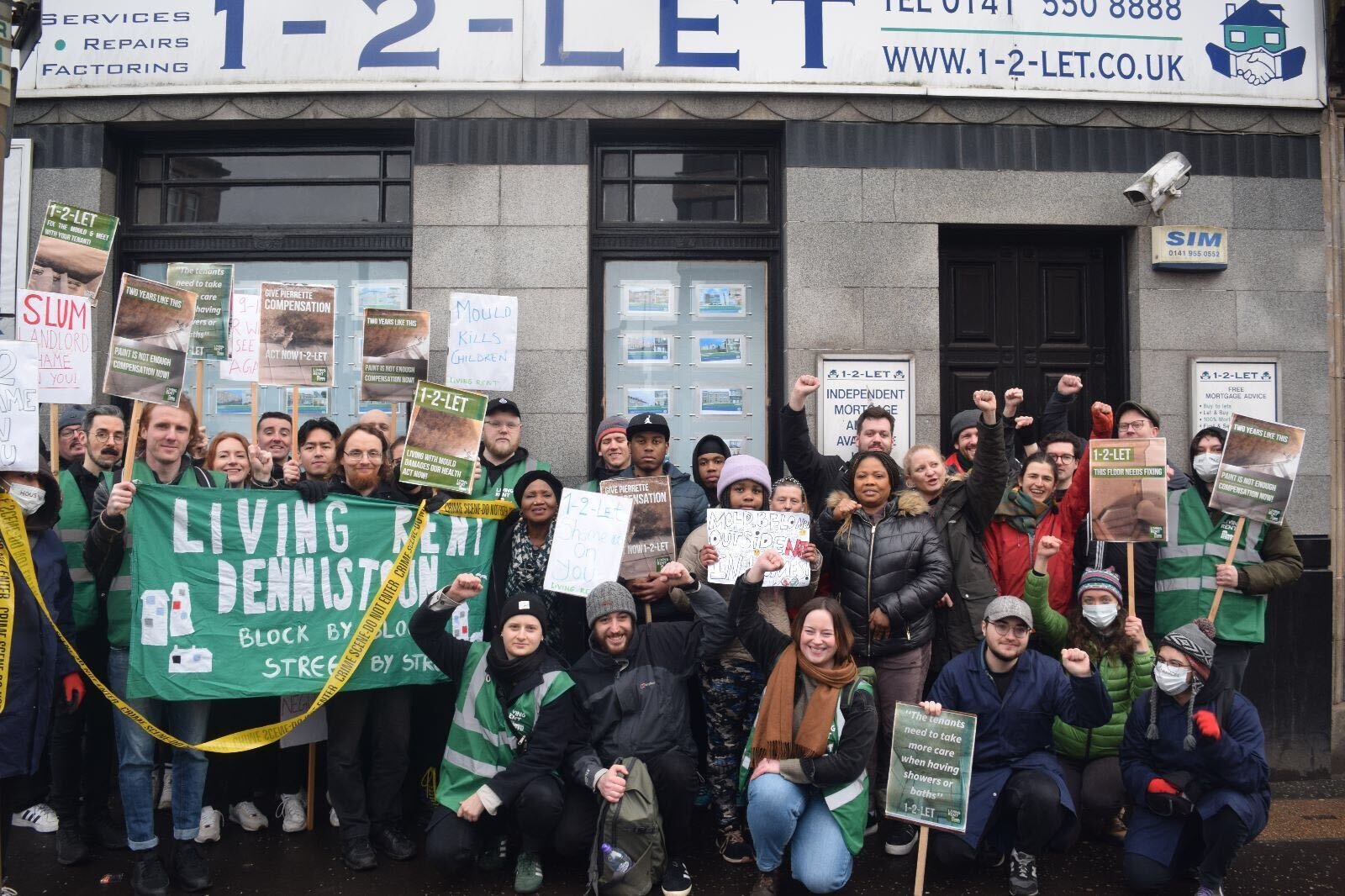How a Tenants’ Union has Changed Scottish Politics
What we were doing wasn’t illegal, but it wasn’t risk-free either.
I took a deep inhale, then let my breath steam into the cold morning air. I looked at the faces around me. Twenty or so determined smirks. They seemed so calm. How could they be so calm?
At the bottom of the hill, we burst through the door. Conversations stopped and faces turned. Twenty jeans among a bustle of suits. Our banner was visible; our purpose clear.
That was 2017. While not a groundbreaking action for the movement, our uninvited appearance at a conference for landlords was a formative experience for me personally. A wide-eyed twenty-year-old, I had a decent grasp of political parties and what I’d now rencognise as mobilising, but this was different. Living Rent was (and is) based on the principle that people can organise locally to build power for themselves. In other words, community organising.
Today, Living Rent’s footprint on Scottish politics is clear. In my short article ‘Securing Tenant Rights in Scotland’, published by the Green European Journal, I show how Living Rent has mainstreamed radical ideas, which have then been forced into policy by the Scottish Green Party.
A powerful story, I am proud to have played even the most fleeting of roles.
